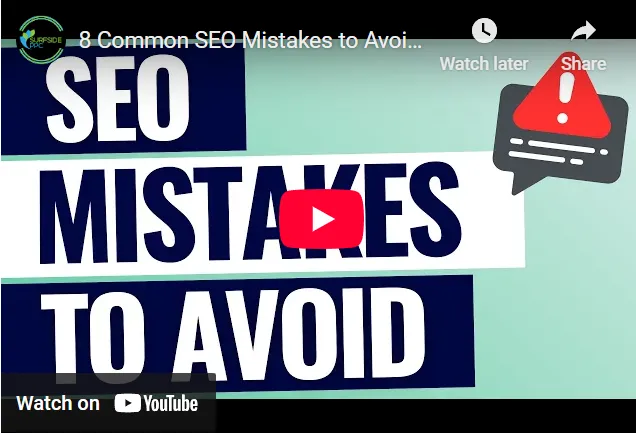Common SEO Mistakes Podiatrists Make and How to Fix Them

In the current digital landscape, maintaining a robust online presence is essential for podiatrists seeking to attract new patients. Many professionals in the field encounter challenges when implementing effective search engine optimization (SEO) strategies. This article examines the fundamental aspects of SEO, its specific relevance to podiatry practices, and the common pitfalls that practitioners frequently face. Furthermore, it will offer practical solutions to these challenges, enabling your practice to fully leverage the potential of SEO for enhanced visibility and patient engagement.
Key Takeaways:
- Utilize local keywords to target and attract potential customers in your area.
- Optimize on-page elements such as title tags, meta descriptions, and headers for improved search engine rankings.
- Ensure your website is mobile-friendly and easily accessible on all devices for a better user experience and increased online visibility.
What is SEO?
Search Engine Optimization, commonly known as SEO, is a practice focused on enhancing a website’s visibility in Search Engine Results Pages (SERPs) using various techniques designed to improve both the quantity and quality of traffic.
This process involves the optimization of multiple elements within a website, including title tags, meta descriptions, headings, and overall site structure, all of which can significantly impact how search engines rank the site.
Plus on-page optimization, SEO also includes off-page strategies such as link building and social media marketing, which collectively contribute to a website’s domain authority and brand awareness.
How Does SEO Affect Podiatrists?
Search Engine Optimization (SEO) plays a vital role in the success of podiatrists by ensuring that their services are easily discoverable online, particularly through Google and other search engines.
By implementing effective SEO strategies, podiatrists can attract relevant search queries, increase their online visibility, and enhance their practice’s overall site performance. Optimizing content and utilizing online directories allows them to bolster their credibility through patient testimonials and reviews, ultimately resulting in an increase in patient inquiries and appointments.
A well-structured SEO approach enables podiatrists to target specific local audiences, effectively distinguishing themselves within their communities.
By leveraging local SEO techniques, they can optimize their Google My Business listings, ensuring that essential information such as office hours, location, and services are readily accessible to potential patients conducting online searches.
The incorporation of local keywords and engaging content can further enhance their online presence, facilitating easier access for individuals seeking the care they require.
Moreover, cultivating a robust online reputation through patient testimonials can significantly influence prospective patients’ decisions, providing evidence of the quality and effectiveness of the podiatric care offered.
What Are the Common SEO Mistakes Podiatrists Make?
Many podiatrists face prevalent SEO pitfalls that can significantly impede their online presence and capacity to attract new patients.
These challenges often arise from a limited understanding of SEO principles and may encompass the failure to utilize relevant keywords, neglecting essential on-page elements, and not optimizing for mobile devices.
Moreover, disregarding the potential of social media marketing can diminish overall visibility in search engines, leading to missed opportunities for engagement with prospective patients and effective communication of their services.
1. Not Using Local Keywords
One of the most significant SEO mistakes made by podiatrists is the ineffective use of local keywords in their content and website optimization. Local keywords are crucial for establishing connections with potential patients in their geographic area, as these terms are frequently employed in relevant search queries.
For example, optimizing for phrases such as “podiatrist in [city]” can substantially enhance local search visibility on platforms like Google, which is vital for attracting new patients seeking foot care services in their vicinity.
By integrating local keywords into various elements of their website, including title tags and meta descriptions, practitioners can significantly improve their online presence. This approach not only increases website traffic but also positions their practice as a trustworthy option for individuals searching for nearby foot care solutions.
Implementing keyword phrases such as “best podiatrist near me” or “foot specialist in [neighborhood]” can effectively capture the attention of individuals actively seeking those specific services. Additionally, creating localized blog posts or service pages that address community-related foot health issues can further enhance their search rankings and relevance in local search results.
2. Neglecting On-Page SEO
Neglecting on-page SEO represents a significant oversight that podiatrists frequently encounter, which can negatively impact their search engine rankings and overall user experience. Essential components such as title tags, meta descriptions, and content must be optimized with relevant keywords to ensure that both search engines and users comprehend the purpose of the webpage.
When these elements are meticulously crafted, they function as vital navigational aids that direct potential patients to pertinent information. For example, a well-structured title tag should contain primary keywords associated with podiatry services, while meta descriptions should succinctly summarize the page content to encourage user engagement.
Moreover, utilizing headings effectively can help organize information in a logical manner, making it easier for visitors to scan and understand the content. To further enhance on-page SEO, incorporating location-based keywords can attract local patients seeking specific podiatric care.
By concentrating on these strategies, podiatrists can not only enhance their search visibility but also create a more engaging online experience for their audience.
3. Ignoring Mobile Optimization
Neglecting mobile optimization represents a critical oversight for podiatrists in today’s digital environment, where an increasing number of patients are seeking services through mobile devices. A mobile-friendly website not only enhances user experience but is also prioritized by search engines such as Google, which evaluate site performance on mobile platforms.
By ensuring their website is responsive and easily navigable on mobile devices, podiatrists can improve engagement, decrease bounce rates, and ultimately increase the number of appointments generated from online inquiries.
A well-optimized mobile site specifically addresses the on-the-go lifestyle of potential patients, enabling them to swiftly access pertinent information about foot care, schedule appointments, or retrieve contact details with ease.
In the process of developing a mobile-friendly website, it is imperative for practitioners to emphasize responsive design, which guarantees that layouts adjust seamlessly to different screen sizes. Additionally, fast loading speeds are crucial for user retention; users are likely to abandon a site that experiences prolonged loading times.
Adhering to these best practices can significantly enhance online visibility and assist podiatrists in maintaining a competitive edge in a saturated marketplace.
4. Not Utilizing Social Media
Failing to utilize social media effectively represents a common oversight among podiatrists, which can significantly impede their efforts to enhance brand awareness and patient engagement. Social media platforms offer invaluable opportunities for podiatrists to connect with potential patients, disseminate relevant content, and cultivate a community surrounding their practice’s services.
By integrating social media marketing into their overall SEO strategy, podiatrists can improve their online presence, enhance search engine rankings, and drive increased traffic to their websites.
Engaging with followers through posts that highlight patient testimonials or provide educational articles on foot health not only demonstrates expertise but also fosters trust and reliability. This active presence can substantially contribute to search engine optimization, as search engines tend to favor businesses that maintain consistent updates and engagement with their audience.
Utilizing relevant hashtags pertaining to podiatry and geographical location can further enhance visibility, facilitating easier discovery of services by potential patients. Ultimately, the development of a comprehensive social media strategy enables podiatrists to forge meaningful connections with patients, cultivate a strong brand identity, and promote their practice effectively.
How Can Podiatrists Fix These SEO Mistakes?
Podiatrists can effectively rectify common SEO mistakes by implementing targeted strategies aimed at enhancing their online visibility and patient engagement. This process commences with conducting comprehensive keyword research to identify relevant search queries utilized by potential patients, thereby enabling the optimization of website content with effective and localized keywords.
Furthermore, by addressing on-page SEO elements such as improving title tags and meta descriptions, ensuring the website is mobile-friendly, and establishing a robust social media presence, podiatrists can significantly improve their overall SEO performance.
1. Conduct Keyword Research
Conducting comprehensive keyword research is vital for podiatrists aiming to enhance their Search Engine Optimization (SEO) efforts and attract more relevant search queries. By identifying the most effective and localized keywords, podiatrists can strategically optimize their podiatry website content to align with the searches conducted by potential patients.
This process involves utilizing various tools and resources that reveal popular search terms within the podiatry field, thereby facilitating the development of content marketing strategies that resonate with the target audience and improve brand awareness.
The implementation of effective keyword research not only increases visibility on the Search Engine Results Page (SERP) but also ensures that the content addresses the specific concerns and interests of prospective patients. Techniques such as:
- Analyzing competitors’ keywords
- Examining search volume trends through platforms like Google Keyword Planner or Ubersuggest
- Leveraging local On-page and Off-page SEO strategies
can significantly enhance outcomes.
Once these relevant keywords are identified, integrating them naturally into website pages, blog posts, and FAQs can improve the overall user experience, increase engagement, and ultimately lead to higher conversion rates. This ensures that the content aligns with the buyers journey, converting casual visitors into dedicated patients seeking podiatric care.
2. Optimize On-Page Elements
Optimizing on-page elements is a crucial step for podiatrists aiming to enhance their On-page SEO efforts and improve user experience across their websites. This process involves refining unique title tags and compelling meta descriptions with relevant keywords to ensure effective communication with search engines and potential patients.
By prioritizing these on-page SEO components, podiatrists can not only improve their search engine rankings but also create a more engaging and informative experience for visitors, ultimately leading to increased patient conversions.
To begin, title tags should accurately reflect the content of each page while incorporating primary keywords and ideally maintaining a length of no more than 60 characters. Meta descriptions, which are typically limited to 160 characters, should provide a concise summary that encourages users to click through to the page. Headings are also essential; utilizing H1 for the main title and H2 for subheadings helps structure the content effectively.
Strategic keyword usage throughout the content ensuring that it is not overstuffed facilitates proper indexing by search engines. Avoiding keyword stuffing is critical. Regular analysis of performance metrics, such as page loading speed and website security, can guide further refinements, enabling podiatrists to remain competitive in the evolving digital landscape.
3. Make Sure Website is Mobile-Friendly
Ensuring that a website is mobile-friendly is essential for podiatrists seeking to engage withtoday’ss mobile-centric audience. A mobile-friendly design not only enhances the overall user experience but also plays a significant role in improving site performance and search engine rankings. By adopting responsive design techniques and optimizing for mobile devices, podiatrists can effectively reduce bounce rates, fix dead links, and encourage potential patients to explore their services.
To achieve these objectives, it is imperative for podiatrists to focus on several key aspects.
- First, the website should automatically adjust to various screen sizes, providing a seamless experience for users on both smartphones and tablets, which is critical in the Technical SEO framework.
- Fast loading times are another critical factor; websites that load slowly tend to frustrate users and result in higher abandonment rates.
- Furthermore, navigation must be intuitive and straightforward, enabling visitors to quickly and easily locate essential information, such as appointment scheduling and contact details.
Regularly testing thesis mobile compatibility using tools like Google’s Mobile-Friendly Test can help identify issues, such as duplicate content, and areas for improvement, thereby ensuring a consistently positive experience for all users.
4. Create a Strong Social Media Presence
Establishing a robust social media presence is essential for podiatrists to enhance brand visibility and engage meaningfully with potential patients. Through effective social media strategies, podiatrists can disseminate valuable content, connect with their audience, and showcase patient testimonials, thereby significantly boosting their SEO efforts and overall brand awareness.
By aligning social media marketing initiatives with their broader SEO objectives, podiatrists can foster stronger relationships, engage in guest posting on online forums like Quora and Reddit, and drive increased traffic to their websites.
Utilizing a variety of platforms is crucial, as each one caters to distinct audience segments and interaction preferences. For example, visual storytelling on platforms such as Instagram and video marketing can effectively highlight treatment successes and provide insights into daily practice, while engaging in discussions on Twitter can help address common concerns or misconceptions regarding foot health.
Consistently sharing educational content, such as blog posts or informative videos, serves to establish authority within the field and attract potential patients seeking reliable information. It is imperative for podiatrists to not only share their expertise but also actively engage with users through comments and messages, thereby cultivating a sense of community and trust.
What Are the Benefits of Proper SEO for Podiatrists?
Effective SEO offers numerous advantages for podiatrists, substantially improving their online presence and contributing to the overall success of their practices.
By implementing well-defined SEO strategies, including the use of 301 redirects and keyword anchor texts, podiatrists can enhance their online visibility, which subsequently results in elevated search engine rankings and an influx of targeted traffic to their websites.
This approach not only aids in attracting new patients seeking foot care services but also promotes greater brand awareness and credibility within their communities, ultimately leading to an increase in patient inquiries and appointments.
1. Increased Online Visibility
One of the primary benefits of proper SEO for podiatrists is the enhanced online visibility achieved through effective optimization strategies. By concentrating on relevant keywords and optimizing their websites, podiatrists can substantially improve their search engine rankings, enabling them to appear higher in search results when prospective patients seek podiatry services.
This increased visibility not only drives more targeted traffic to their websites but also promotes greater patient engagement and trust in their practices.
In an increasingly digital landscape, the capacity to be easily discovered online is essential for attracting new patients. As more individuals rely on the internet to identify healthcare options, podiatrists must ensure that their online presence accurately reflects their expertise.
The implementation of effective SEO techniques, such as local search optimization, high-quality content creation, addressing low-quality content, and the establishment of backlinks and internal links, can help these practitioners maintain and even enhance their visibility over time.
Furthermore, actively engaging with online reviews, utilizing social media platforms, and registering in online directories like Google My Business contribute to building a strong reputation, thereby facilitating the decision-making process for potential patients considering their practice.
2. Higher Search Engine Rankings
Achieving higher rankings on the Search Engine Results Page (SERP) is a fundamental objective of Search Engine Optimization (SEO), particularly for podiatrists, as it can result in a significant increase in patient inquiries and new appointments. By effectively utilizing relevant keywords, optimizing on-page elements like page URL slugs and alt tags, and enhancing site performance, podiatrists can secure improved positions in search results, thereby facilitating greater discoverability of their services by potential patients.
This advancement in search rankings is crucial for maintaining a competitive edge in the digital landscape.
Employing local SEO techniques is particularly important for podiatrists, given that the majority of patients prefer nearby providers for reasons of convenience and accessibility.
Incorporating localized keywords and ensuring accurate listings of their practice in online directories can greatly enhance online visibility. Additionally, engaging with patient reviews and feedback not only boosts credibility but can also have a positive impact on rankings.
By consistently delivering high-quality, informative content that resonates with potential patients, podiatrists not only enhance their search engine performance but also cultivate trust, leading to increased patient loyalty and referrals.
3. More Targeted Traffic
Proper SEO techniques not only enhance overall traffic to podiatry websites but also ensure that this traffic is more targeted, resulting in higher conversion rates. By concentrating on specific keywords and optimizing content to align with user intent, podiatrists can attract visitors who are genuinely interested in their services, thereby increasing the probability of converting these visitors into patients.
This targeted approach is essential for maximizing the effectiveness of their online marketing strategies.
By meticulously selecting keywords related to common foot ailments or treatment options, podiatrists can effectively engage individuals who are actively seeking solutions. For example, content that addresses inquiries such as “best treatments for plantar fasciitis” or “foot pain relief options” resonates with potential patients, effectively connecting their needs with the services provided.
This alignment not only enhances the user experience and optimizes for relevant search queries but also fosters trust, as visitors perceive that their concerns are recognized and addressed. Consequently, the increased relevance of the website’s content can lead to a substantial rise in appointment bookings, making targeted traffic through Search Engine Optimization (SEO) a critical element of a podiatrist’s overall success.
4. Improved Brand Awareness Through Effective SEO
Improved brand awareness is a significant advantage derived from the implementation of effective SEO practices for podiatrists, including on-page SEO, off-page SEO, and technical SEO. By enhancing their online presence through optimized content and strategic content marketing initiatives, podiatrists can establish themselves as trusted authorities in foot care within their communities. This increased brand awareness not only promotes patient engagement but also fosters loyalty among existing patients, ensuring a steady stream of inquiries and referrals.
To achieve these objectives, podiatrists should prioritize the creation of high-quality and informative content that addresses common foot health concerns, thereby improving their online visibility. Additionally, utilizing social media platforms for social media marketing and sharing patient testimonials and educational materials can further enhance their reputation.
Incorporating local SEO strategies, such as optimizing for location-based keywords, enables potential patients to find their services more easily when searching for foot care options in their vicinity, particularly through Google My Business and relevant keywords placement.
Ultimately, these strategies not only enhance recognition but also contribute to a positive brand perception, cultivating trust and encouraging patients to prioritize their foot health, through improved domain authority and appearing higher on the Search Engine Results Page.

Frequently Asked Questions
What are common SEO mistakes that podiatrists make?
Some common SEO mistakes that podiatrists make include not utilizing local keywords, not optimizing for mobile-friendly design on mobile devices, not regularly updating website content, and not having a blog or social media presence.
How can podiatrists fix their local SEO?
Podiatrists can fix their local SEO by including location-specific keywords in their website content, claiming and optimizing their Google My Business listing, getting listed on online directories and engaging in guest posting on online forums like Quora and Reddit.
What can podiatrists do to optimize their website for mobile devices?
To optimize their website for mobile devices, podiatrists should ensure that their website is mobile-responsive, has fast page loading speed, and has easy-to-navigate menus and buttons, improving overall site performance.
Why is it important for podiatrists to regularly update their website content?
Regularly updating website content helps to improve SEO rankings by showing search engines like Google that the website is active and relevant with unique title tags and compelling meta descriptions. It also provides valuable information for potential patients and can help establish the podiatrist as an expert in their field.
How does having a blog or social media presence benefit podiatrists’ SEO?
Having a blog or social media presence allows podiatrists to regularly publish new content, which can help improve SEO rankings through the use of keyword anchor texts. It also provides a platform for engaging with potential patients and building brand awareness through video marketing.
What are some other common SEO mistakes that podiatrists should be aware of?
Other common SEO mistakes that podiatrists should be aware of include using duplicate content, neglecting website security, and failing to use 301 redirects and alt tags for images. It is important for podiatrists to regularly review and update their SEO strategies, including avoiding dead links and keyword stuffing, to stay ahead of the competition.











